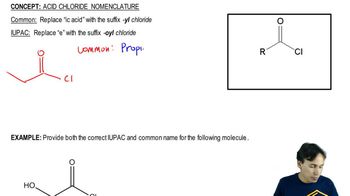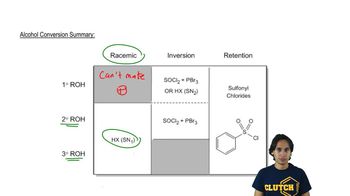How could you synthesize the following compounds starting with a carboxylic acid?
b.

 Verified step by step guidance
Verified step by step guidance Verified video answer for a similar problem:
Verified video answer for a similar problem:



 1:36m
1:36mMaster Synthesis of Acid Chlorides with a bite sized video explanation from Johnny
Start learning